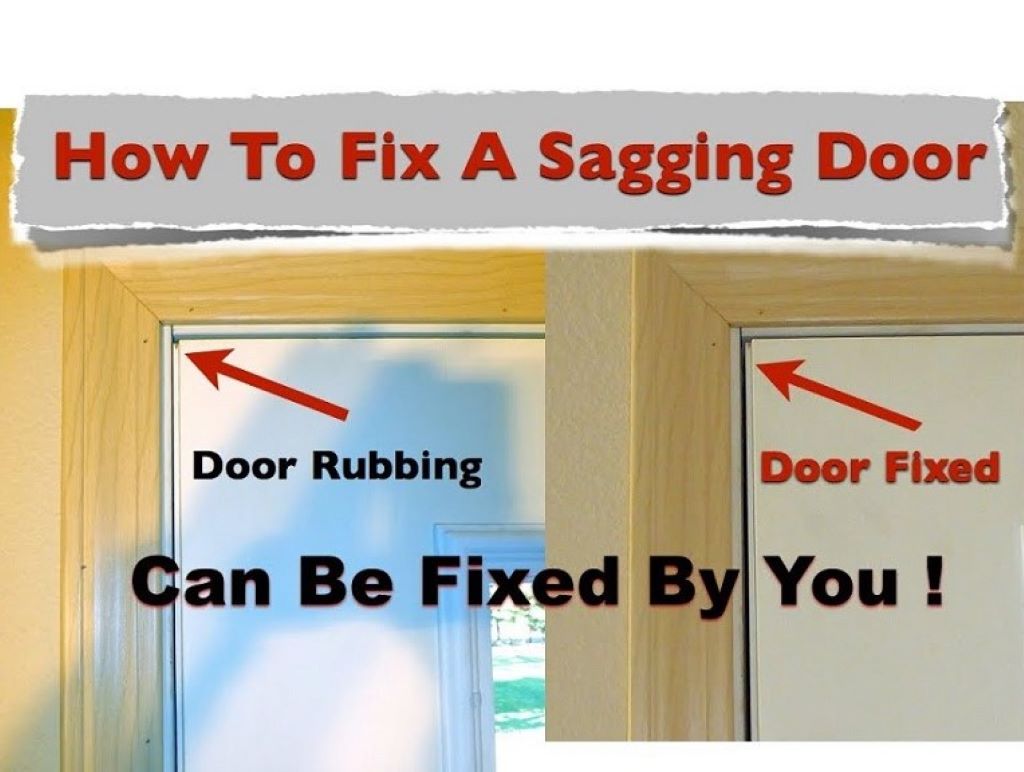How to Fix a Sagging Door: A Step-by-Step Guide

Is your door starting to sag and not closing properly? A sagging door can be a frustrating problem to deal with, but fortunately, it’s something you can fix on your own with a little know-how. In this article, we will guide you through how to fix a sagging door. By following these instructions, you’ll have your door back in proper working condition in no time.
Having a door that sags is not only annoying but can also affect the security, energy efficiency, and aesthetics of your home. It may cause the door to scrape against the floor or frame, making it difficult to open or close. However, with a few simple tools and techniques, you can restore your door to its former glory.
Assessing the Problem
When assessing a sagging door, it’s important to look for any other signs of damage or wear and tear. For example, a 45 degree drywall crack near the door frame could indicate that the frame has shifted or settled, causing the door to sag. By addressing any additional issues along with the door itself, you can ensure a more thorough and effective fix.
Tools You’ll Need
To fix a sagging door, gather the following tools:
- Screwdriver
- Hammer
- Wood shims
- Carpenter’s level
- Wood glue
- Drill
- Longer screws
- Sandpaper
Step 1: Tighten the Hinge Screws
Start by inspecting the hinge screws on both the door and the door frame. If the screws are loose, use a screwdriver to tighten them. This simple step can often alleviate minor sagging issues and improve the alignment of the door.
Step 2: Replace Short Screws with Longer Ones
In some cases, the screws that hold the hinges in place may be too short, causing the door to sag. Remove the short screws and replace them with longer ones that securely anchor the hinges to the door frame.
Step 3: Use Wood Shims
If the door continues to sag after tightening the screws, you can use wood shims to realign the door. Insert the shims between the hinge and the door frame to provide support and restore the proper positioning of the door. Trim off any excess shim using a utility knife.
Step 4: Check the Strike Plate
A misaligned strike plate can also contribute to a sagging door. Examine the strike plate on the door frame and ensure it is properly aligned with the door latch. If necessary, adjust the strike plate to ensure the door latches securely.
Step 5: Reinforce the Hinge with Wood Glue
For more severe cases of sagging, reinforcing the hinges with wood glue can provide added stability. Remove the hinge pins and apply wood glue to the hinge knuckles. Reinsert the pins and allow the glue to dry completely before testing the door.
Step 6: Adjust the Door Frame
If all else fails, and the door still sags, you may need to make adjustments to the door frame. Using a carpenter’s level, check the alignment of the frame and identify any areas that need adjustment. You can use shims or even sand down the door frame slightly to achieve the desired alignment.
Conclusion
A sagging door can be a nuisance, but with the right tools and techniques, you can easily fix the problem. By following the step-by-step guide outlined in this article, installing a keypad door lock with a deadbolt included, you’ll be able to restore your door to its proper functioning and enjoy a well-aligned, smoothly operating entrance.
Frequently Asked Questions
Q: How do I know if my door is sagging?
A: Signs of a sagging door include difficulty in closing or opening the door, uneven gaps between the door and the frame, and scraping sounds when the door is moved.
Q: Can I fix a sagging door without professional help?
A: Yes, with the right tools and instructions, you can fix a sagging door on your own. It’s a relatively simple task that requires basic DIY skills.
Q: Do I need to remove the door to fix the sagging issue?
A: In most cases, you can fix a sagging door without removing it. The steps outlined in this article can be done with the door in place.
Q: How long does it take to fix a sagging door?
A: The time required to fix a sagging door depends on the severity of the issue. Minor sagging can often be fixed within an hour or two, while more complex problems may take longer.
Q: Can I prevent my door from sagging in the future?
A: Regular maintenance, such as tightening screws, lubricating hinges, and inspecting the door frame, can help prevent sagging issues. It’s also important to address any structural issues promptly to avoid further damage.







